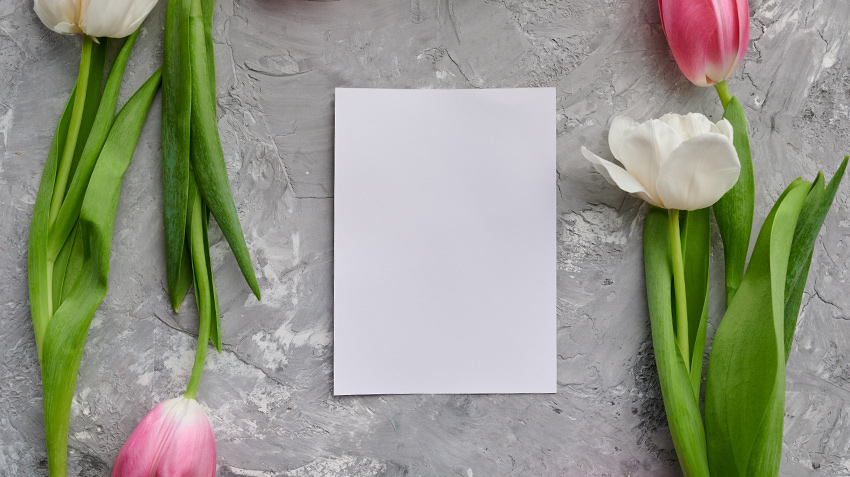
Memorial cards serve a deeper purpose than just being part of the funeral day.
These small but meaningful keepsakes offer mourners a tangible way to remember someone they loved. Funeral home memorial cards are often held onto for years, tucked into photo albums or kept in wallets, offering quiet moments of reflection long after the services are over.
They carry emotional weight—not only for what they say, but for how they make people feel. A thoughtfully designed memorial card can bring comfort and peace during a time of great sorrow. It can remind someone of the good memories, the laughter shared, and the life lived. By focusing on personalization and quality, you can create something that truly honors the memory of the deceased.
1. Understand the Purpose of a Memorial Card
Funeral home memorial cards are more than informational pieces. They are tokens of remembrance. For many families, they serve as lasting mementos that can be revisited again and again. While these cards may contain practical details like the date and time of the service, their primary role is emotional. They’re often designed to celebrate the person’s life, values, and personality.
These cards also act as a physical extension of the service itself. While flowers will fade and candles burn out, memorial cards remain. They reflect the legacy of the departed and become keepsakes for family and friends. Some people frame them, while others place them on altars or memory walls. Regardless of where they end up, their value goes far beyond paper.
2. Choose the Right Size and Format
When selecting the format of your funeral home memorial cards, think about how they will be used and preserved. The most common options include folded cards, flat cards, and bookmark-style cards.
Folded cards give you the most space for photos, messages, and biographical details. They often feel more like mini booklets, which makes them ideal for those wanting to share a little more about their loved one’s life. However, they can be more expensive and require careful layout design.
Flat cards are simple and elegant. They’re easy to display on a fridge, slip into a wallet, or insert into a photo frame. They work well when you want to include a beautiful photo and a short quote or prayer. The trade-off is that space is limited, so you’ll need to be concise.
Bookmark-style cards are unique and practical. Their slim shape allows them to be used regularly, especially by those who enjoy reading. They’re a wonderful option if the deceased was an avid reader or had a particular book or quote they loved. However, they provide even less space for content, so it’s important to focus on one or two meaningful elements.
3. Select a Meaningful Photo
The image you choose for the memorial card will often be the first thing people see—and remember. Select a photo that is high-quality and clear. It should reflect the person at their best, perhaps during a happy moment or doing something they loved.
Some families opt for formal portraits, while others prefer candid shots taken during special occasions. The best choice is one that captures the spirit and personality of the individual. Folded cards offer the chance to include more than one image, which can be especially useful if you’d like to include both a younger and more recent photo.
4. Add Personal Details Thoughtfully
The essential information—full name, date of birth, and date of passing—should be prominently displayed. But beyond these basics, consider adding a few highlights from their life. A short biography can be a wonderful way to share key moments, achievements, or passions.
Mentioning the person’s hometown, key family members, military service, or notable career milestones can make the card feel much more personal. It’s important to be respectful of the space, but thoughtful curation of details can make a big difference in how the card is received.
5. Include a Heartfelt Message or Quote
A well-chosen message or quote can bring comfort to grieving hearts. Many people turn to Bible verses, poetry, or spiritual sayings. Others prefer to use something the person often said or believed. If the deceased had a favorite phrase, mantra, or humorous saying, that can be a great addition, too.
If you prefer to write something original, try speaking directly from the heart. What would you say if you had one last note to include with their photo? Keep it simple, sincere, and personal. Avoid clichés or generic sentiments. The more personal the message, the more meaningful it becomes.
6. Use a Design that Reflects Their Life
The visual style of the card should reflect the personality and values of the person being remembered. This includes everything from the color scheme to the imagery. Soft pastels or floral backgrounds may suit someone gentle and nurturing. A more vibrant or artistic layout might be better for someone with a bold, creative spirit.
Symbolic images can also help communicate feelings when words fall short. Doves, sunsets, mountains, or religious symbols such as crosses or rosaries can all help convey meaning. If your loved one was deeply connected to a particular culture or faith, consider incorporating elements that reflect that.
7. Consider Adding a Prayer or Poem
Many families choose to include a short prayer or poem in the funeral home memorial cards. This can serve as a moment of quiet reflection or a spiritual send-off. Choose verses that are uplifting, peaceful, and appropriate for all ages.
Popular choices include Psalm 23, the Serenity Prayer, or short, comforting poems. You can also leave space for handwritten notes or custom messages, allowing attendees to add personal tributes after the service.
8. Proofread and Print Professionally
Accuracy is crucial when creating a memorial card. Before printing, triple-check all names, dates, and wording. Even small mistakes can feel significant during times of grief. Ask a trusted friend or family member to review the content as well.
When it comes to printing, use a professional service—whether it’s a local print shop or an online provider specializing in funeral cards. They’ll ensure the finish is clean, the photos are sharp, and the card feels substantial. If your loved one cared about the environment, consider eco-friendly paper options as a thoughtful touch.
Frequently Asked Questions
Below are some commonly asked questions to consider:
What type of paper is best for funeral home memorial cards?
A heavy cardstock with a matte or satin finish is usually preferred. It provides durability and a professional feel, especially if the card is intended to be kept long-term.
Can I create digital memorial cards for virtual funerals?
Yes, digital memorial cards are becoming more common. They can be shared via email or during virtual services and still include all the same heartfelt elements as printed versions.
How soon should I have the memorial cards ready?
It’s ideal to have them printed and ready before the day of the funeral or memorial service. Allow at least 3–5 business days for design, proofreading, and printing.
Create Funeral Home Memorial Cards that Truly Matter
Creating memorial cards is about honoring a life in a way that feels authentic and heartfelt. These small tokens can offer great comfort long after the service has ended. With careful thought and attention to detail, your card can become a treasured keepsake—a quiet reminder of a loved one who meant so much to you.
If you need help creating the ideal memorial cards, get in touch with professional funeral services today.



